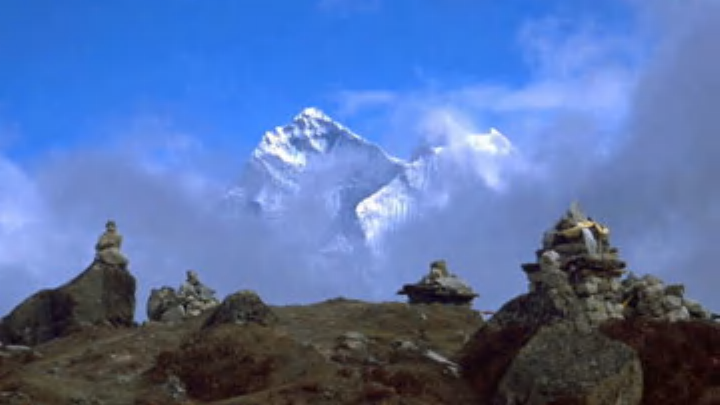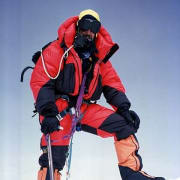Warming Temperatures Expose the World's Highest Graveyard

The Highest Graveyard in the World
Mt. Everest is the highest mountain in the world, standing at 29,029 ft. It is also the highest graveyard in the world, as over 300 people took their final steps and breaths on the peak’s icy and rugged terrain. This pristine Himalayan resting place preserves fallen climbers due to the extreme cold and dry air, and serves as a monument to those that attempted to summit Mt. Everest but did not return. Of the more than 300 deaths on Mt. Everest, eight climbers (5 confirmed dead, and 3 still missing) perished in 2024, and eighteen people met their fate in 2023 – the most in one year since expeditions began in the 1920’s.
Bodies Left Behind on Mt. Everest
It is difficult and dangerous to recover bodies from Mt. Everest, and other 8,000- meter peaks. The high-altitude environment and extreme conditions on these high mountains present significant recovery challenges. Recovery operations pose deadly prospects, as many have died during such missions due to the very conditions that doomed those they attempt to recover. Helicopters offer limited assistance in recovery efforts. The highest helicopter rescue on Mt. Everest was at 25,590 ft. in 2013, which was executed in perfect weather. The ‘Death Zone’ where oxygen levels are approximately 30% of those at sea-level, starts at approximately 26,000 ft. and where most of the fallen climbers rest under snow and ice.
Beyond the dangers associated with body removal, the costs to remove bodies from Mt. Everest and other Himalayan peaks are high and prohibitive. While some bodies have been identified and returned to their native countries and families, the majority of fallen climbers remain on the mountain where they died. Mother Nature, specifically global warming, is increasingly playing a role in surfacing fallen mountaineers buried for years.
Rising Global Temperatures Melt Glaciers
Those that die on high mountains are most often buried deep beneath snow and ice debris following an avalanche or serac collapse. Many die after falling into a crevasse. Where these climbers perish becomes their frozen tomb. But the planet is warming, ice is melting, glaciers are receding, and the ghostly bodies of fallen climbers are appearing where they once were hidden for years and decades.
“Because of global warming, the ice sheet and glaciers are fast melting and the dead bodies that remained buried all these years are now becoming exposed,” Ang Tshering Sherpa, former president of the Nepal Mountaineering Assn., told the BBC in 2019. This is amplifying the issue of body recovery on Mt. Everest and other big mountains.
2024 Cleanup Campaign
During the 2024 spring climbing season on Mt. Everest, a climbing team dedicated to recovering and returning corpses from the mountain faced extreme risk during this noble endeavor. The team retrieved five unnamed frozen bodies as part of a new mountain cleanup project. Unfortunately, hundreds of bodies remain within Mt. Everest’s icy grave, and more will surface. "Because of the effects of global warming, the bodies and trash are becoming more visible as the snow cover thins," said Aditya Karki, a major in Nepal's army who led the team of 12 military personnel and 18 climbers. "It is extremely difficult," said Tshiring Jangbu Sherpa, who led the body retrieval expedition. "Getting the body out is one part, bringing it down is another challenge." (From CBS News)
Aditya Karki added, "We have to bring them back as much as possible, If we keep leaving them behind, our mountains will turn into a graveyard.” The clean-up campaign employed 171 Nepali guides and porters also collected and disposed of approximately 12 tons of garbage.
It is sad when climbers perish pursuing their dreams. When their bodies emerge from the depths of towering peaks it is dangerous and costly to recover their remains. We simply need to do our best for the families of the fallen, and integrity of the mountains. Tshiring Jangbu Sherpa noted, "The mountains have given us mountaineers so many opportunities, I feel that we have to give back to them, we have to remove the trash and bodies to clean the mountains."
